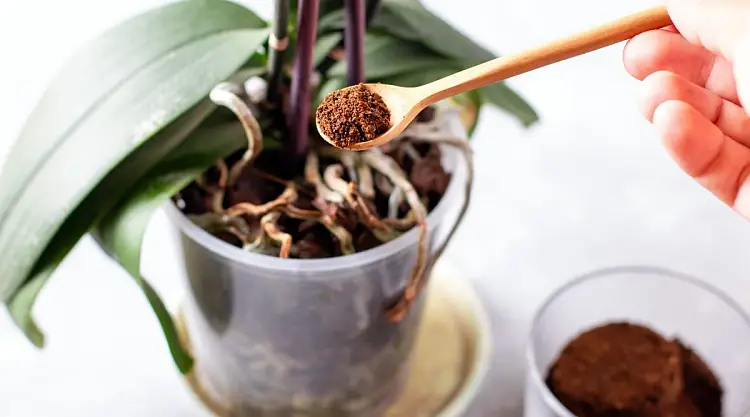
Natural fertilization is a little more complicated than simply dumping organic matter into the soil of plants. This requires a holistic ecosystem with healthy communities of microorganisms, the right temperature, humidity and the time needed to break down large nutrient molecules in organic material into smaller chemical molecules before they can be absorbed by the plant’s roots. The principle of organic fertilization is to feed the soil and not the plants. Soil microbes can take anywhere from 3 weeks to a few months to convert large molecules of organic matter, such as proteins, into smaller molecules. However, since orchids do not grow in soil, the way to naturally fertilize epiphytic orchids should not be aimed at to nourish the soil for release. On the contrary, an immediate release of nutrients is necessary. What makes natural fertilization difficult for orchid growers is the approach that most orchids grown at home is not natural to their native habitat. This includes:
- Cultivation of potted orchids
- Growing orchids indoors
- Growing orchids in a moss and bark medium
- Rinse or soak orchids regularly to prevent salt buildup on the roots
- Change the environment every 2 years to avoid decomposition and root rot
Yeast orchid fertilizer: the recipe

A good natural fertilizer suitable for growing orchids indoors should be water-based to allow for rapid release of nutrients. Follow these instructions to prepare the yeast dressing recipe:
- 1 kilogram of yeast diluted in 5 liters of water
- Before use, dilute the solution with water in a 1:10 ratio.
If you have dry yeast instead of regular yeast:
- Calculate 10 grams per 10 liters of warm water
- Add two tablespoons of sugar
- Let the mixture sit for a few hours.
- As a rule, this solution is used for watering flower beds, vegetables, fruit trees, as well as berry bushes and orchids.
Myths about natural fertilizers for orchids

There is nothing wrong with fertilizing plants naturally as natural fertilizers are good for plants. But many people make it sound too easy. Below I will tell you about the problems with some myths of these commonly recommended natural fertilizers to avoid mistakes when caring for orchids.
- Coffee: Using coffee to fertilize orchids is one of the main myths. Coffee works well as a fertilizer for garden plants with soil. But not really for indoor orchids. Are coffee grounds good for houseplants? This poses a number of problems, especially when fertilizing orchids. It can clog the foam backing, reducing airflow to the roots and increasing the risk of root rot. In addition, coffee grounds take a long time for the protein to be broken down by microbes and release their nitrogen for the roots to absorb. Again, epiphytic orchids do not grow in soil, so it is questionable whether there are enough microbes around the roots to break down nitrogen, if any. Coffee grounds can also attract mosquitoes and decaying pests.
- Eggshells: There are recommendations to boil eggshells, grind them into powder and then spray them on orchid leaves or apply them directly to the substrate. The claim is that burnt eggshells provide orchids with calcium phosphate. The problem is very similar to that of coffee grounds. Eggshell powder can clog the orchid medium and reduce airflow to the roots. And applying eggshell powder to the leaves doesn’t work because the protein molecule is too large to pass through the leaves’ tiny pores. So beware of myths.